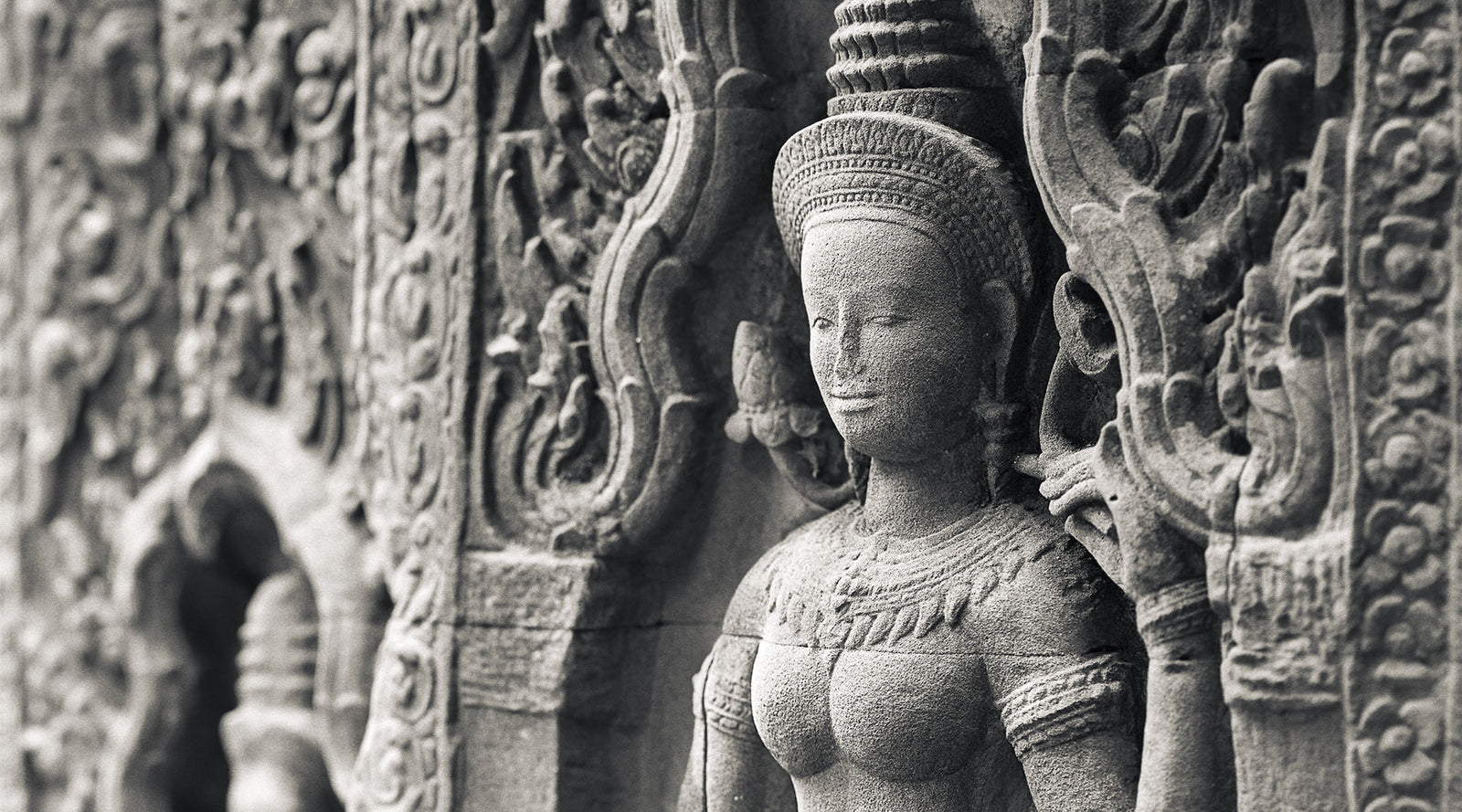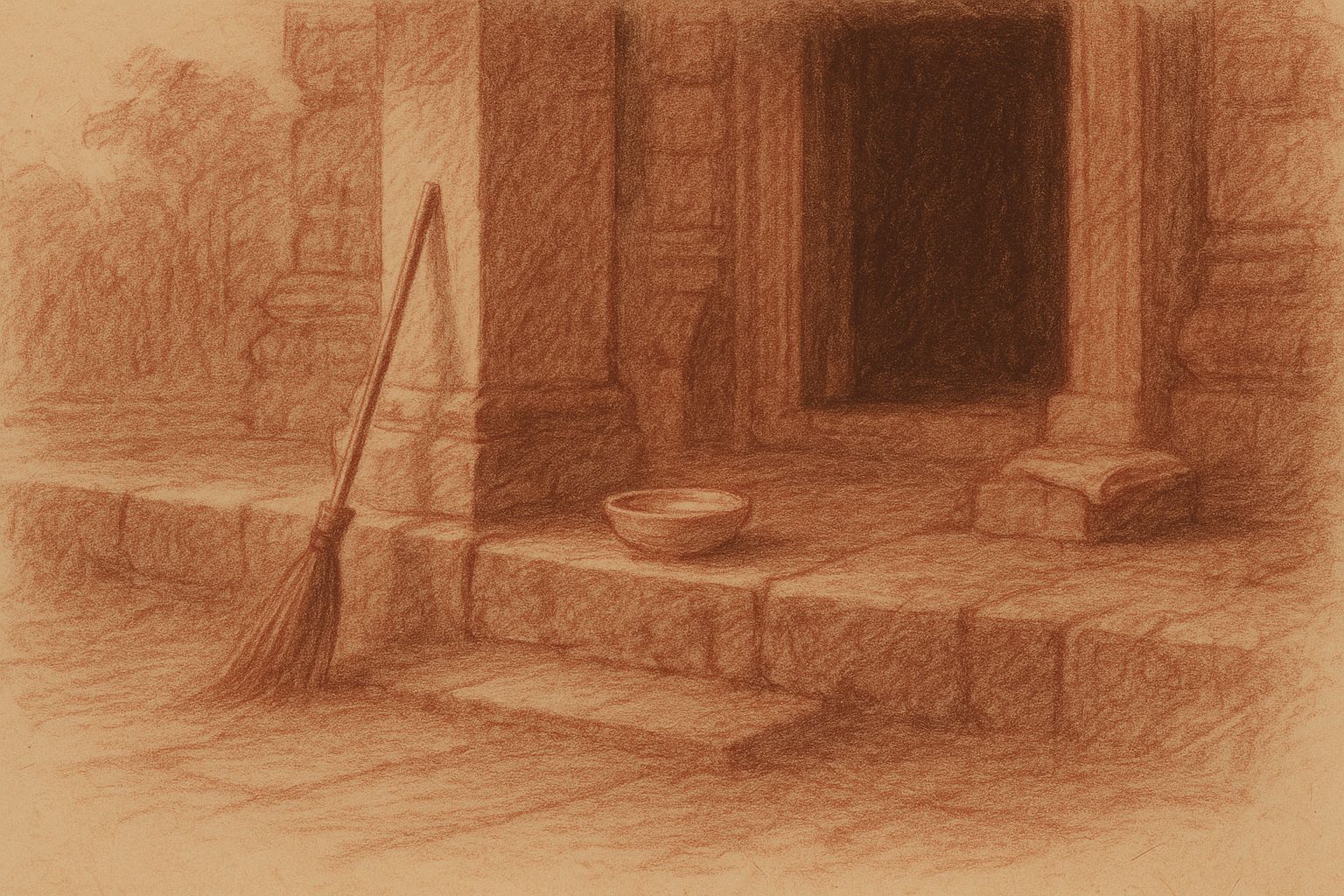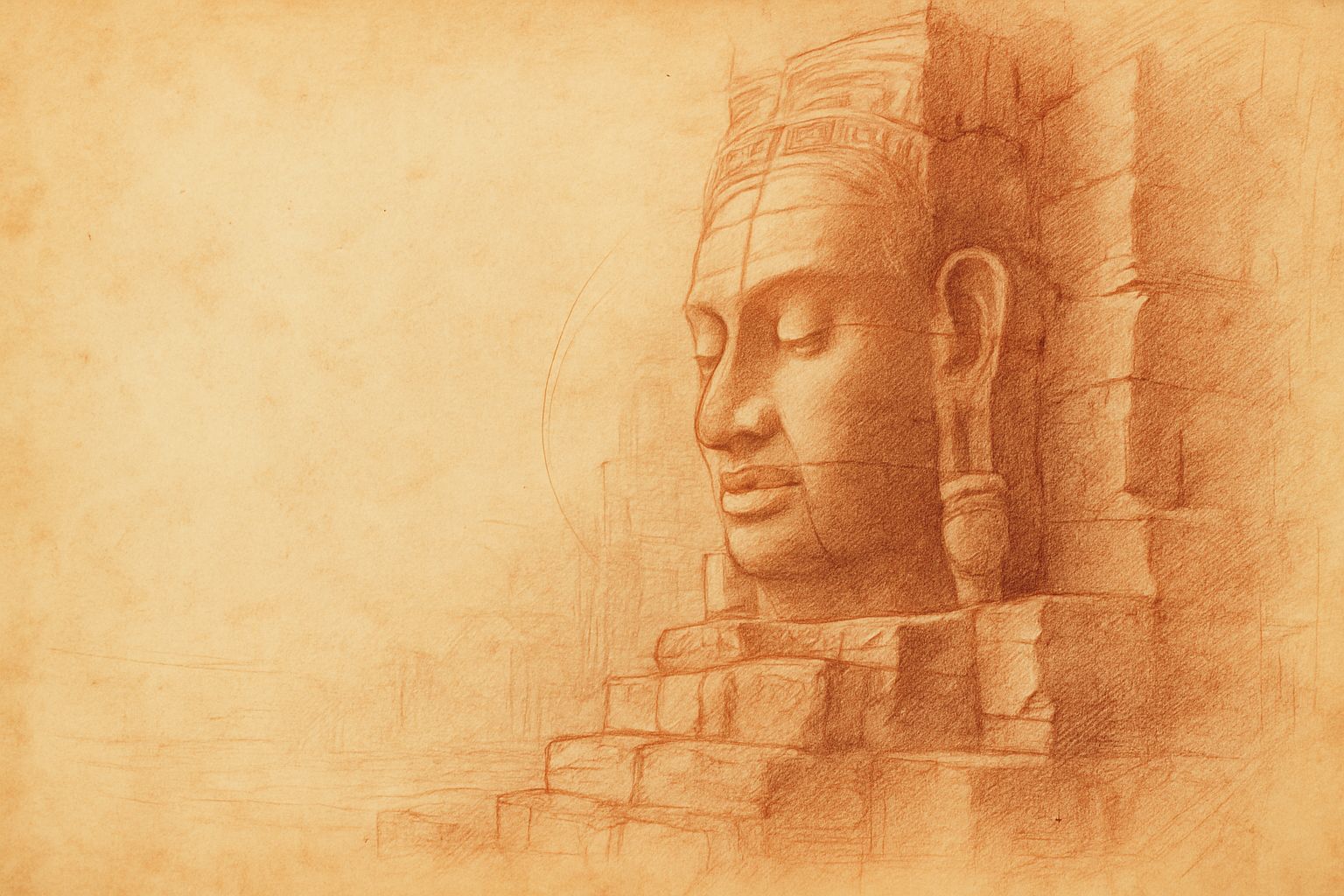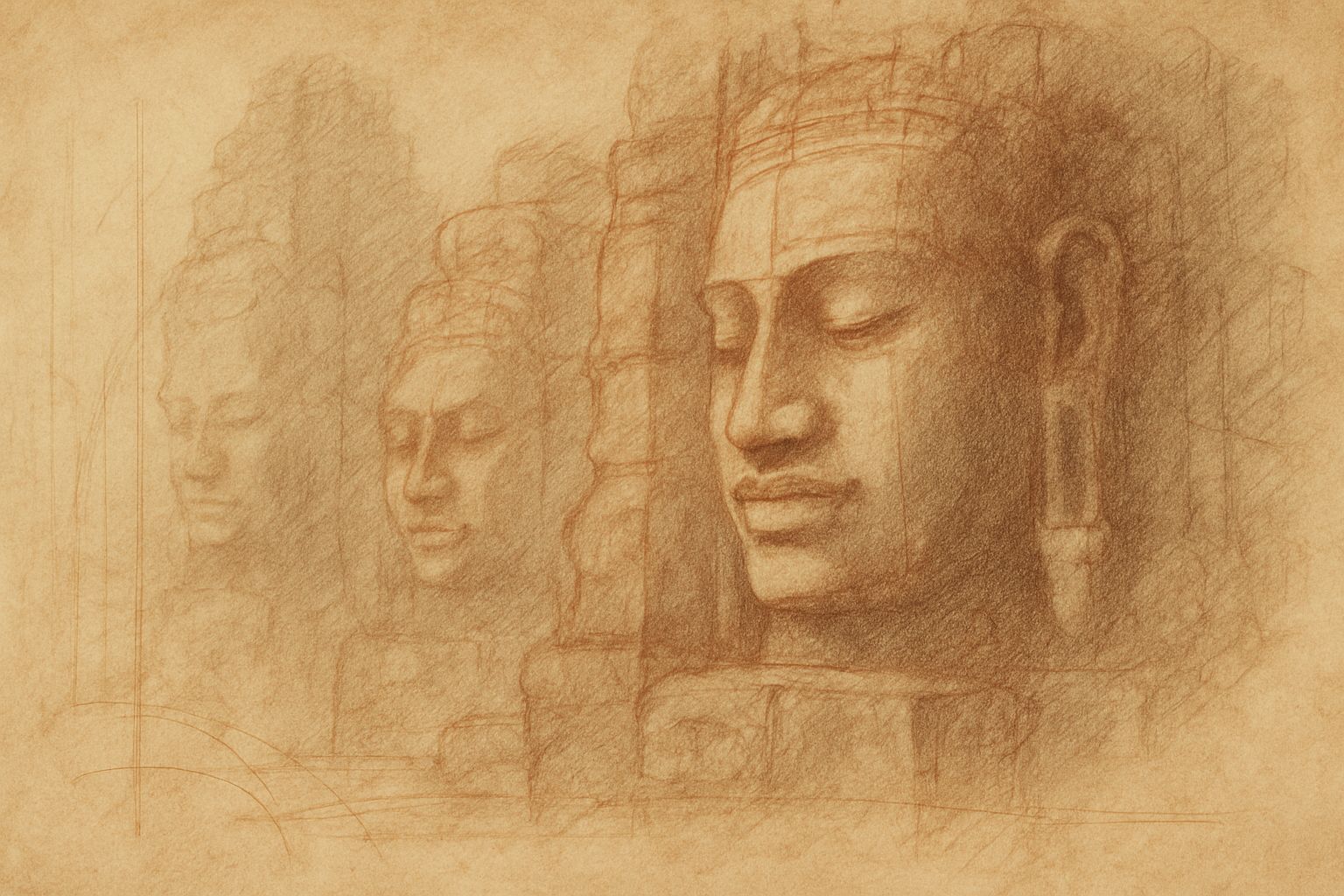Complimentary worldwide shipping on orders over $400 · No import tariffs for most countries
Complimentary worldwide shipping on orders over $400 · No import tariffs for most countries

What the Rain Left Behind
1 min read
Before light had fully arrived, I stood beneath the western gallery, watching the wall where time leaned inward. She did not appear suddenly; she emerged, as if remembered. A carved figure, her gesture softened into a near-erasure. Her face, nearly gone. Yet something remained whole.
I did not lift the lens. I only stood there, breathing where breath thins into reverence. No birds sang. Even the wind withheld itself.
She no longer belonged to any era. Her beauty was no longer defined by line, but by presence—the quiet radiance of a form too worn for praise, too luminous to be forgotten.
First light on wet stone—
a presence too worn for names,
but not for stillness.
Also in Library

Those Who Keep the Way Open — On the Quiet Guardians of Angkor’s Thresholds
3 min read
Quiet gestures shape the way into Angkor — a swept stone, a refilled bowl, a hand steadying a guardian lion. This essay reflects on the unseen custodians whose daily care keeps the thresholds open, revealing how sacredness endures not through stone alone, but through those who tend its meaning.

Multiplicity and Mercy — The Face Towers of Jayavarman VII
5 min read
A new vision of kingship rises at the Bayon: serene faces turned to every horizon, shaping a world where authority is expressed as care. Moving through the terraces, one enters a field of steady, compassionate presence — a landscape where stone, light, and time teach through quiet attention.

Stone That Dreams
4 min read
Bayon wakes like a mind emerging from shadow. Its many faces shift with light and breath, teaching that perception—and the self—is never singular. In walking this forest of towers, the pilgrim discovers a quiet multiplicity within, held together by a calm that feels both ancient and newly understood.
Preah Khan Temple, Angkor, Cambodia — 2020
Limited Edition Archival Pigment Print
Edition
Strictly limited to 25 prints + 2 Artist’s Proofs
Medium
Hand-toned black-and-white archival pigment print on Hahnemühle Bamboo — a museum-grade fine art paper chosen for its quiet tactility and reverent depth, echoing the spirit of the temples.
Signature & Numbering
Each print is individually signed and numbered by the artist on the border (recto)
Certificate of Authenticity
Accompanies every print
Image Size
8 x 8 inches (20.3 x 20.3 cm)
Dawn drifts across Preah Khan like a whispered psalm, finding an apsara carved mid-breath, her worn features turned toward a light that has travelled centuries to meet her.
Stone damp with night rain exhales; moss darkens the thresholds; silence grows until it feels almost visible—an unseen veil between the present and something immeasurably older.
I approached barefoot, each muted footfall dissolving into the hush. In that suspended moment her gesture seemed to move without moving, inviting the heart to remember a rhythm older than speech.
Captured on large-format black-and-white film, the exposure lingered, allowing low light to carve shadow like water over stone. In the studio, meticulous hand-toning and classical chiaroscuro extended the devotion, revealing subtleties of grain and breath otherwise lost.
Printed as a museum-grade archival pigment print on Hahnemühle Bamboo paper, this work is limited to twenty-five impressions, with two Artist’s Proofs—each signed, numbered, and accompanied by a certificate.
Welcome her stillness as a quiet threshold within your own space.
Previously titled ‘Apsara I, Preah Khan Temple, Angkor, Cambodia. 2020,’ this photograph has been renamed to better reflect its place in the series and its spiritual tone. The edition, provenance, and authenticity remain unchanged.
Join My Studio Journal
Receive occasional letters from my studio in Siem Reap—offering a glimpse into my creative process, early access to new fine art prints, field notes from the temples of Angkor, exhibition announcements, and reflections on beauty, impermanence, and the spirit of place.
No noise. No clutter. Just quiet inspiration, delivered gently.
Subscribe and stay connected to the unfolding story.

Join My Studio Journal
Receive occasional letters from my studio in Siem Reap—offering a glimpse into my creative process, early access to new fine art prints, field notes from the temples of Angkor, exhibition announcements, and reflections on beauty, impermanence, and the spirit of place.
No noise. No clutter. Just quiet inspiration, delivered gently.
Subscribe and stay connected to the unfolding story.

